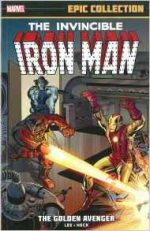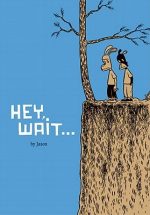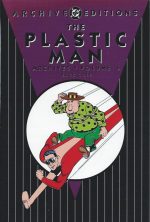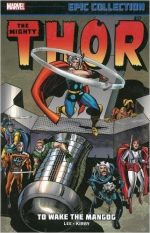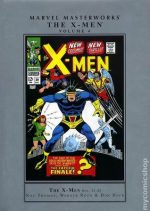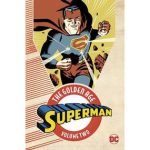
By Jerry Siegel & Joe Shuster, Wayne Boring, Jack Burnley & various (DC Comics)
ISBN: 978-1-4012-6530-4
It’s incontrovertible: The American comicbook industry – if it existed at all – would have been an utterly unrecognisable thing without Superman. His unprecedented invention and adoption by a desperate and joy-starved generation gave birth to an entire genre if not an actual art form.
Superman spawned an inconceivable army of imitators and variations, and within three years of his 1938 debut, the intoxicating blend of eye-popping action and social wish-fulfilment which hallmarked the early Man of Steel had grown to encompass cops-and-robbers crime-busting, socially reforming dramas, science fiction, fantasy, whimsical comedy and, once the war in Europe and the East finally involved America, patriotic relevance for a host of gods, heroes and monsters, all dedicated to profit through exuberant, eye-popping excess and vigorous dashing derring-do.
Now with moviegoers again anticipating a new cinematic interpretation of the ultimate immigrant tale, here’s my chance to once more highlight perhaps the most authentic of the many delightful versions of his oft-reprinted early tales.
Re-presenting the epochal run of raw, unpolished but viscerally vibrant stories by Jerry Siegel & Joe Shuster which set the funnybook world on fire, here – in as near-as-dammit the texture, smell and colour of the original newsprint – are the crude, rough, uncontrollable wish-fulfilling, cathartically exuberant exploits of a righteous and superior man dealing out summary justice equally to social malcontents, exploitative capitalists, thugs and ne’er-do-wells that initially captured the imagination of a generation.
This second revamped and remastered collection of the Man of Steel’s earliest exploits, reprinted in the order they first appeared, spans the still largely innocent and carefree year of 1940 in a spiffy package that covers all his appearances from Action Comics #20-31, Superman #4-7 and his last starring role in New York World’s Fair #2 (and that only because the title would convert to initially World’s Best before and eventually settling as the much more reserved World’s Finest Comics).
Although Siegel & Shuster had very much settled into the character by now the buzz of success still fired them and innovation still sparkled amidst the exuberance. This incredible panorama of torrid tales opens with ‘Superman and the Screen Siren’ from Action#20 (January 1940) as beautiful actress Delores Winters is revealed not as another sinister super-scientific megalomaniac but the latest tragic victim and organic ambulatory hideout of aged mad scientist Ultra-Humanite who had perfected his greatest horror… brain transplant surgery!
This is followed with an immediate sequel as “Delores†attempts to steal another scientist’s breakthrough and utilise ‘The Atomic Disintegrator’ to demolish the Man of Steel whilst Action #22 loudly declares ‘Europe at War’ a tense and thinly disguised call to arms for the still neutral USA, and a continued story – almost unheard of in those early days of funny-book publishing which spectacularly concluded in #23.
Superman #4, cover-dated Spring, featured four big adventures that began with a succession of futuristic assassination attempts in ‘The Challenge of Luthor’. After an educational cartoon vignette on ‘Attaining Super-Strength’, the original Man of Might battles dinosaurs and bandits in ‘Luthor’s Undersea City’, before saving the world from financial and literal carnage by ferreting out ‘The Economic Enemy’ – a prophetic spy story about commercial sabotage by an unspecified foreign power…
The issue then ends with a tale of gangsters intimidating Teamsters called ‘Terror in the Trucker’s Union’.
In Action Comics #24 ‘Carnahan’s Heir’ becomes Superman’s latest social reclamation project as the Metropolis Marvel promises to turn a wastrel into a useful citizen, whilst the next told the tale of the ‘Amnesiac Robbers’ compelled to crime by an evil hypnotist.
Superman #5 is a superb combination of human drama, crime and wickedly warped science with our hero crushing ‘The Slot Machine Racket’ and foiling a rival paper’s ‘Campaign Against the Planet’. The insidious threat of ‘Luthor’s Incense Machine’ is similarly scuttled before finally Big Business chicanery is exposed and punished in ‘The Wonder Drug’. These are augmented by a flurry of gag cartoons by Siegel & Schuster promoting health and exercise…
Next comes a tale of gangsters attempting to plunder jewels from exhibits at the New York World’s Fair as seen in New York World’s Fair #2 credited to Siegel and Schuster but looking to my tired old eyes to be the wonderful Jack Burnley (Anyone got any comments or information they care to share here?)…
Siegel & Shuster had created a true phenomenon and were struggling to cope with it. As well as the monthly and bimonthly comics a new quarterly publication, World’s Finest Comics – springing from the success of the publisher’s New York World’s Fair comic-book tie-ins – would soon debut and their indefatigable hero was to feature prominently in it. Also, the Superman daily newspaper strip, which began on 16th January 1939, with its separate Sunday strip following from November 5th of that year, was garnering millions of new fans. The need for new material and creators was constant and oppressive.
From Action Comics#26 (July 1940) came ‘Professor Cobalt’s Clinic’ wherein Clark Kent and Lois Lane expose a murderous sham Health Facility with a little Kryptonian help, whilst the next month dealt a similar blow to the corrupt orphanage ‘Brentwood Home for Wayward Youth’. The September issue found Superman at the circus, solving the mystery of ‘The Strongarm Assaults’, a fast-paced thriller beautifully illustrated by the astonishingly talented Jack Burnley.
Whilst thrilling to that, kids of the time could also have picked up the sixth issue of Superman (September/October 1940). Produced by Siegel and the Superman Studio, with Shuster increasingly only overseeing and drawing key figures and faces, this contained four more lengthy adventures.
‘Lois Lane, Murderer’, ‘Racketeer Terror in Gateston’, ‘Terror Stalks San Caluma’ and ‘The Construction Scam’ had the Man of Action saving his plucky co-worker from a dastardly frame up, rescuing a small town from a mob invasion, foiling a blackmailer who’s discovered his secret identity and spectacularly fixing a corrupt company’s shoddy, death-trap buildings.
Action Comics #29 (October 1940) again features Burnley art in a gripping tale of murder for profit. Human drama in ‘The Life Insurance Con’ was replaced by deadly super-science as the mastermind Zolar created ‘A Midsummer Snowstorm’, allowing Burnley a rare opportunity to display his fantastic imagination as well as his representational acumen and dexterity.
Superman# 7 (November/December1940) marked a creative sea-change as Wayne Boring became Schuster’s regular inker and saw the Man of Steel embroiled in local politics when he confronted ‘Metropolis’ Most Savage Racketeers’, quelled man-made disasters in ‘The Exploding Citizens’, stamped out City Hall corruption in ‘Superman’s Clean-Up Campaign’ (illustrated fully by Wayne Boring) and put villainous high society bandits ‘The Black Gang’ where they belonged – behind iron bars.
This volume ends with another all-star inclusion from Action Comics – # 31 in fact – with Burnley drawing another high-tech crime caper as crooks put an entire city to sleep and only Clark Kent isn’t ‘In the Grip of Morpheus’…
My admiration for the stripped-down purity and power of these Golden Age tales is boundless. Nothing has ever come near them for joyous, child-like perfection. You really should make them part of your life.
© 1940, 2016 DC Comics. All Rights Reserved.



